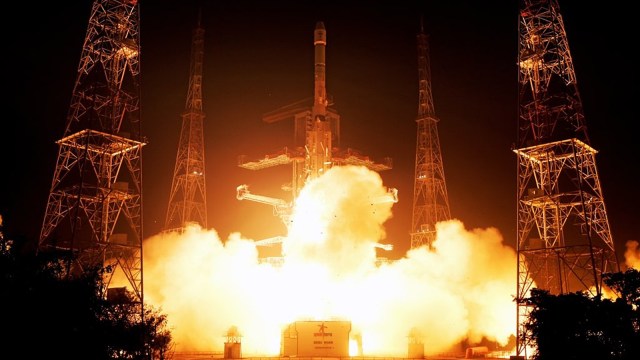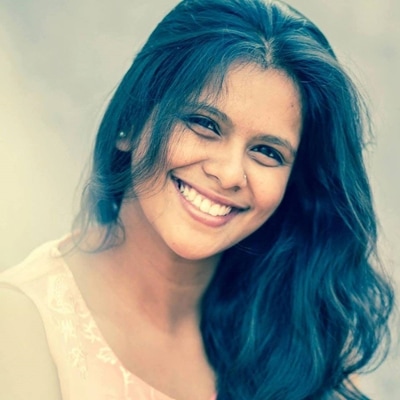After Isro’s 100th launch, space agency chief V Narayanan salutes leaders of the past (original) (raw)
 The GSLV-F15 launch from Sriharikota on Wednesday morning. (Photo: X/@isro)
The GSLV-F15 launch from Sriharikota on Wednesday morning. (Photo: X/@isro)
With the first launch of the year, the Indian Space Research Organisation (Isro) Wednesday achieved a significant milestone of completing 100 launches by placing the second-generation navigational satellite in orbit from the Sriharikota space centre in Andhra Pradesh.
The Geosynchronous Satellite Launch Vehicle (GSLV-F15) lifted off with the NVS-02 satellite, which is part of India’s growing network of navigation systems. With this launch, Isro has placed in orbit 548 satellites weighing 120 tonnes. Of this, 433 satellites weighing 23 tonnes were from foreign nations.

This was the first launch under the chairmanship of Dr V Narayanan as well. After the historic launch, he recalled the greats like Vikram Sarabhai, Satish Dhawan, and A P J Abdul Kalam. He said: “On behalf of the present generation of Isro leaders, I salute all the previous generation of leaders, the past and present employees, and our family members.”
#100thLaunch:
Congratulations @isro for achieving the landmark milestone of #100thLaunch from #Sriharikota.
It’s a privilege to be associated with the Department of Space at the historic moment of this record feat.
Team #ISRO, you have once again made India proud with… pic.twitter.com/lZp1eV4mmL— Dr Jitendra Singh (@DrJitendraSingh) January 29, 2025
He also recalled India’s big scientific missions — three Chandrayaan missions, the Mars Orbiter Mission, and Aditya-L1.
Congratulating Isro, Union Minister Jitendra Singh wrote on X: “It’s a privilege to be associated with the Department of Space at the historic moment of this record feat. Team #ISRO, you have once again made India proud with successful launch of GSLV-F15 / NVS-02 Mission. From a humble beginning by Vikram Sarabhai, Satish Dhawan and few others, it has been an amazing journey.”
The vehicle performance was as anticipated and it placed the satellite in a geostationary transfer orbit — an orbit which satellites use to go into the high geostationary orbit. Over the next few days, manoeuvres will be done to take the satellite to its final orbit.
Wednesday’s launch was the 17th flight of the GSLV vehicle, with the eleventh flight using the indigenously developed cryogenic engine. Despite a few misses in the past by the vehicle — which earned it the nickname “naughty boy” — it has been performing well. The last unsuccessful launch using the vehicle was in 2021 when a lower pressure in a hydrogen tank in the upper stage of the vehicle led to an abort command. The vehicle also launched NVS-01 in May 2023.
The NVS-02 is the second satellite in the second generation of satellites developed for the Indian Regional Navigation Satellite System (IRNSS), containing an indigenous atomic clock. Some of the previous generation satellites had stopped providing location data owing to the malfunctioning atomic clocks. A satellite-based positioning system determines the location of objects by accurately measuring the time it takes for a signal to travel to and back from it using the atomic clocks on board.
Story continues below this ad
The constellation has had more trouble as well, with one of the replacement satellites IRNSS-1H not making it to orbit after the heat shield on Isro’s most reliable rocket PSLV failed to open. IRNSS-1I was then sent as a replacement. There were also delays in developing user segments for utilising IRNSS data. Now, with chipsets that are capable of using IRNSS signals available, several new cell phones utilise IRNSS data for location services.
Anonna Dutt is a Principal Correspondent who writes primarily on health at the Indian Express. She reports on myriad topics ranging from the growing burden of non-communicable diseases such as diabetes and hypertension to the problems with pervasive infectious conditions. She reported on the government’s management of the Covid-19 pandemic and closely followed the vaccination programme. Her stories have resulted in the city government investing in high-end tests for the poor and acknowledging errors in their official reports. Dutt also takes a keen interest in the country’s space programme and has written on key missions like Chandrayaan 2 and 3, Aditya L1, and Gaganyaan. She was among the first batch of eleven media fellows with RBM Partnership to End Malaria. She was also selected to participate in the short-term programme on early childhood reporting at Columbia University’s Dart Centre. Dutt has a Bachelor’s Degree from the Symbiosis Institute of Media and Communication, Pune and a PG Diploma from the Asian College of Journalism, Chennai. She started her reporting career with the Hindustan Times. When not at work, she tries to appease the Duolingo owl with her French skills and sometimes takes to the dance floor. ... Read More
© IE Online Media Services Pvt Ltd
- Tags:
- ISRO
